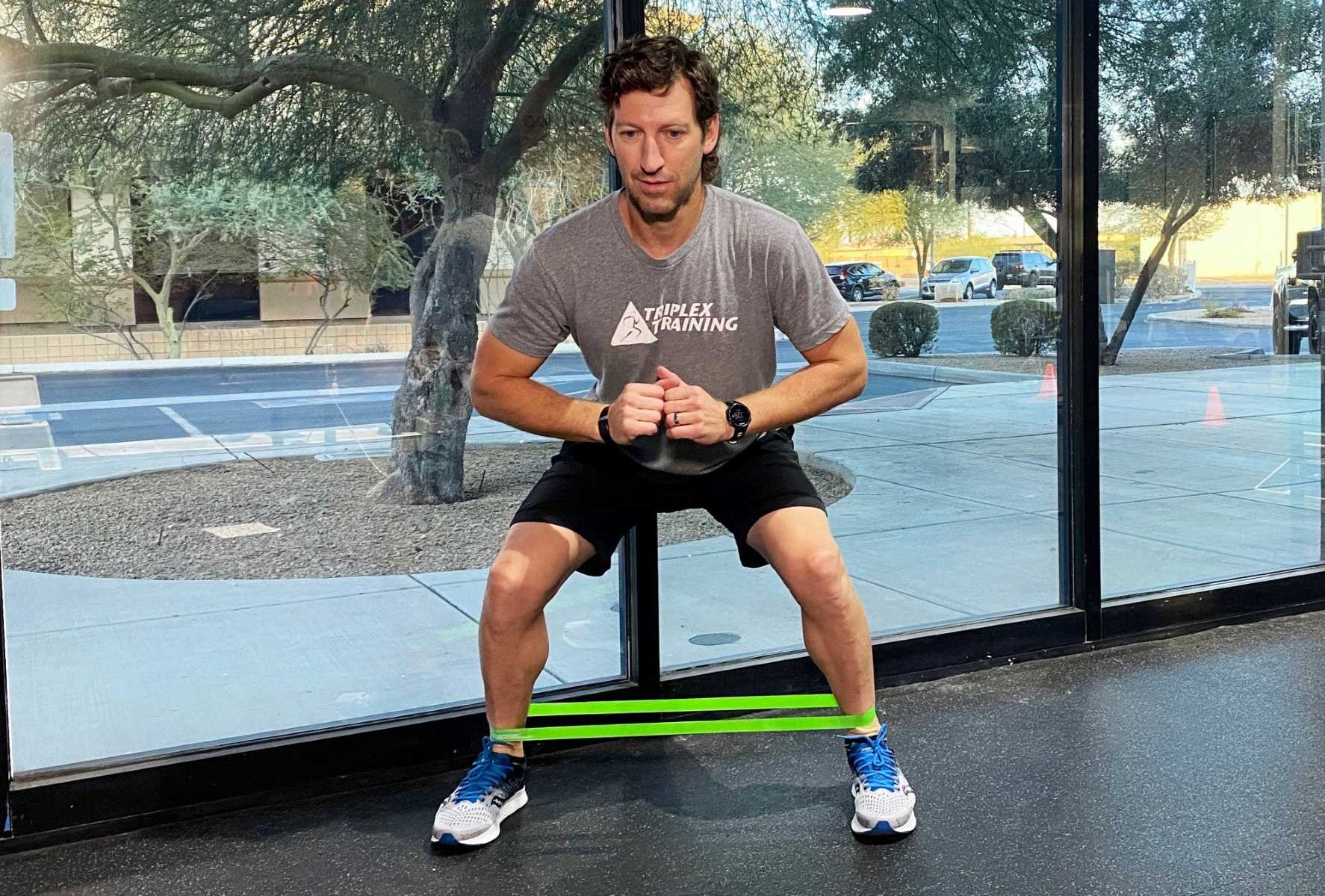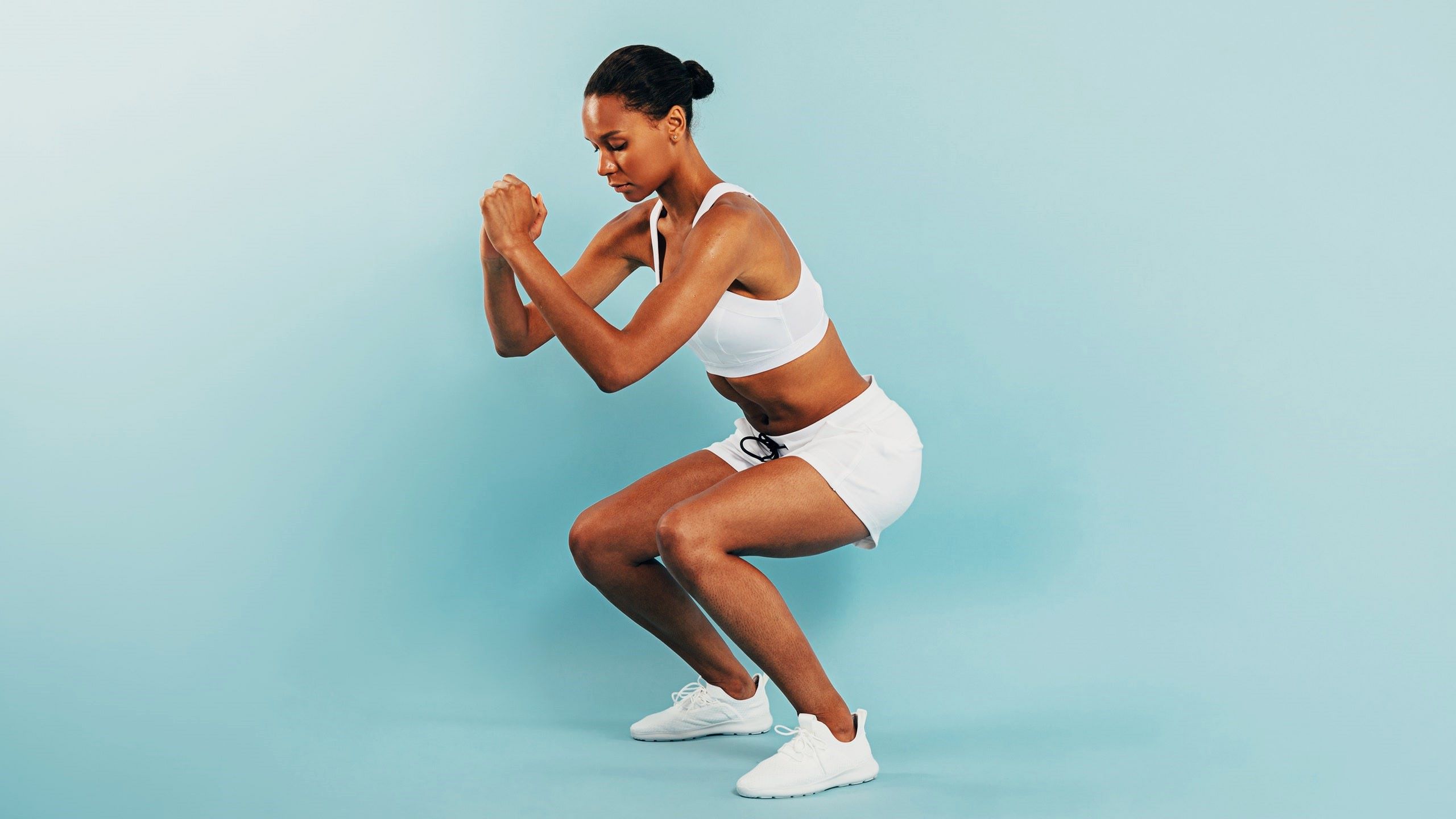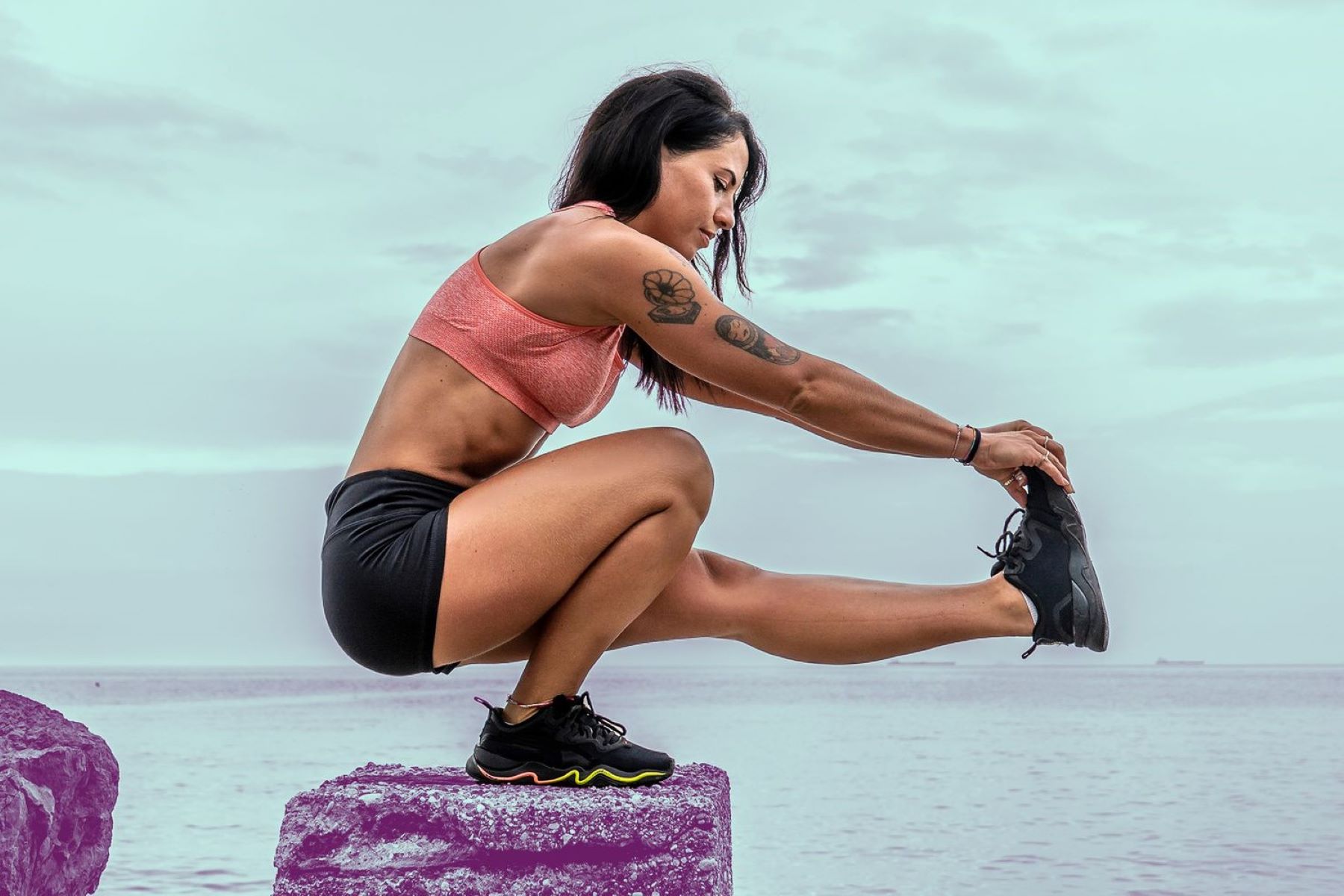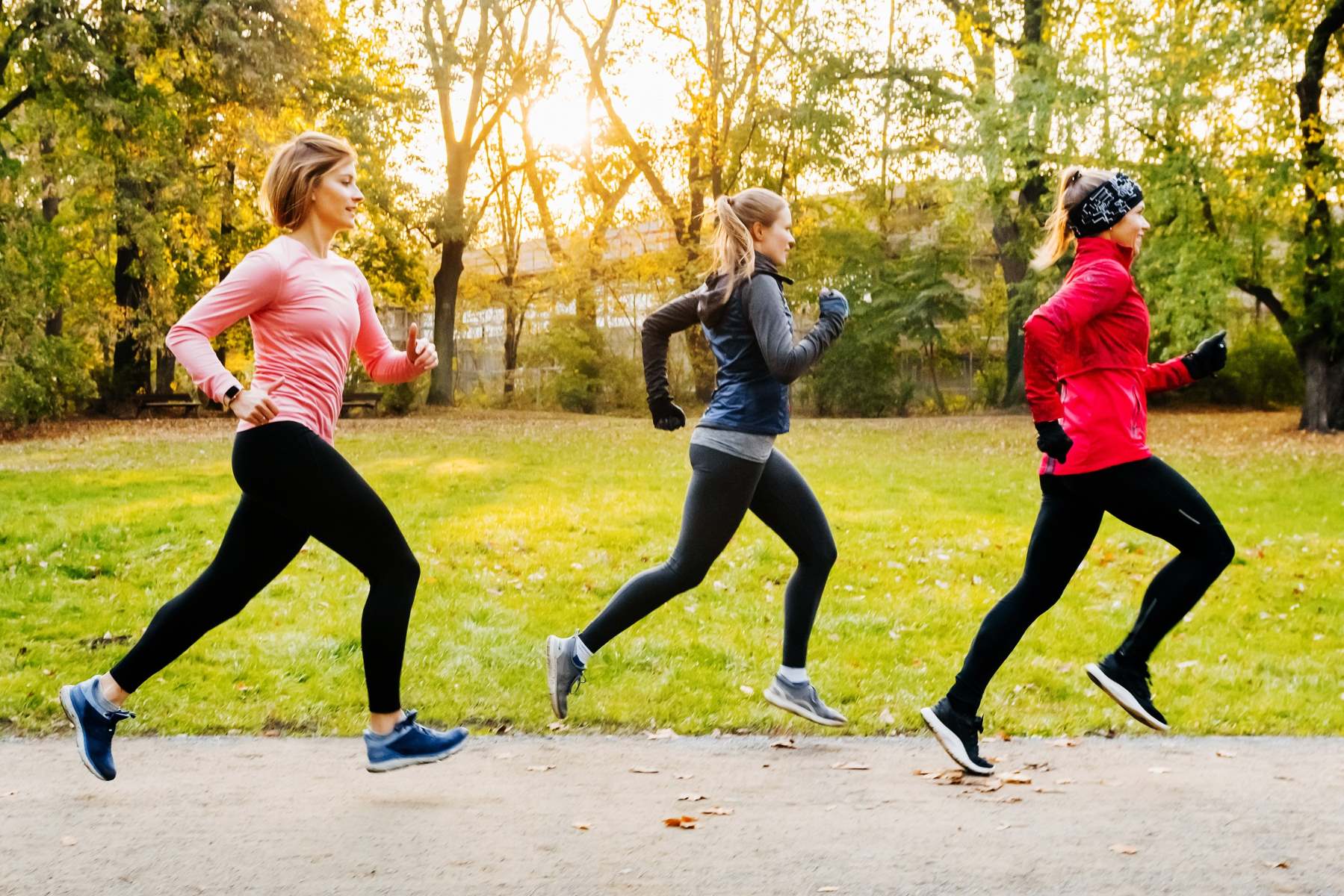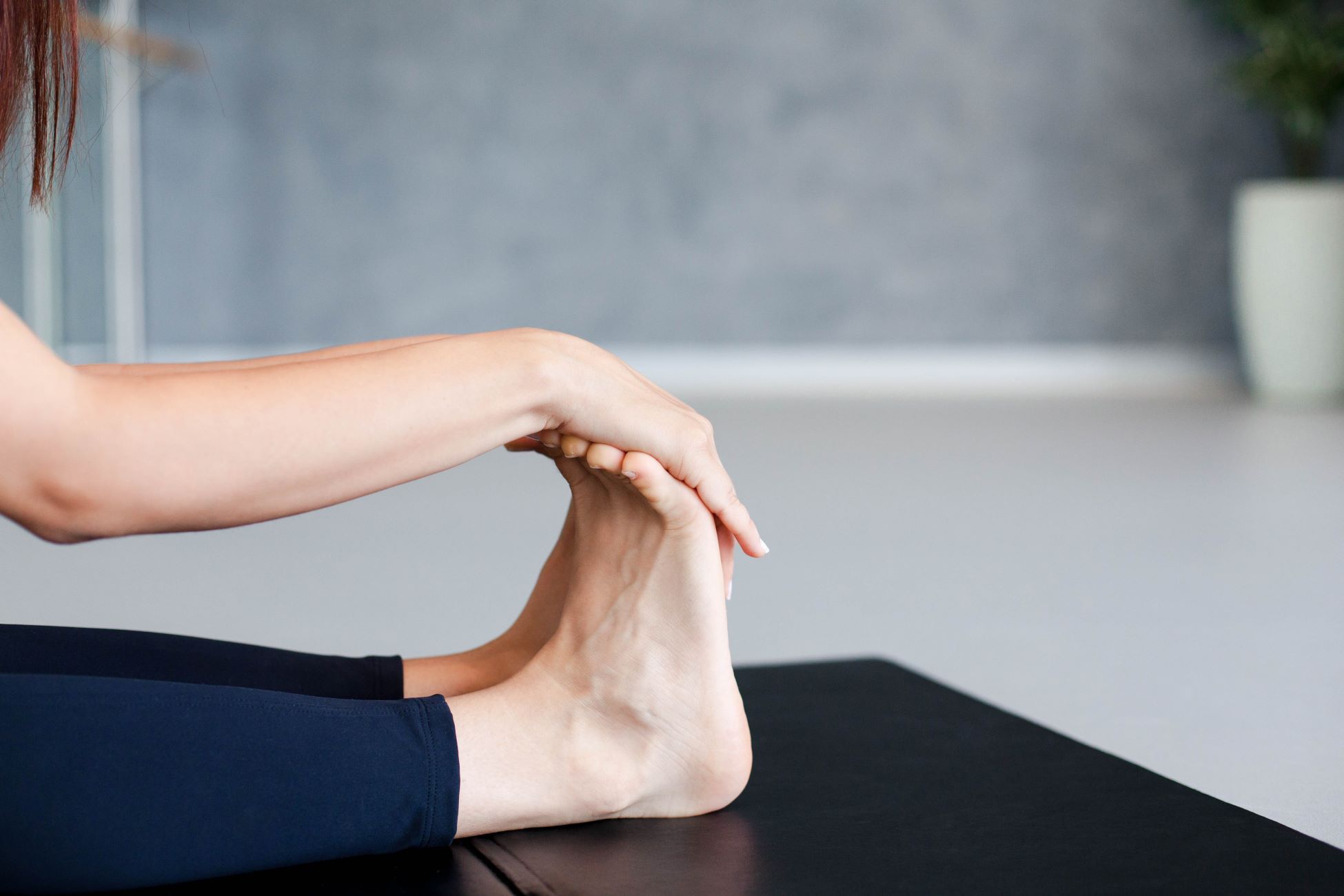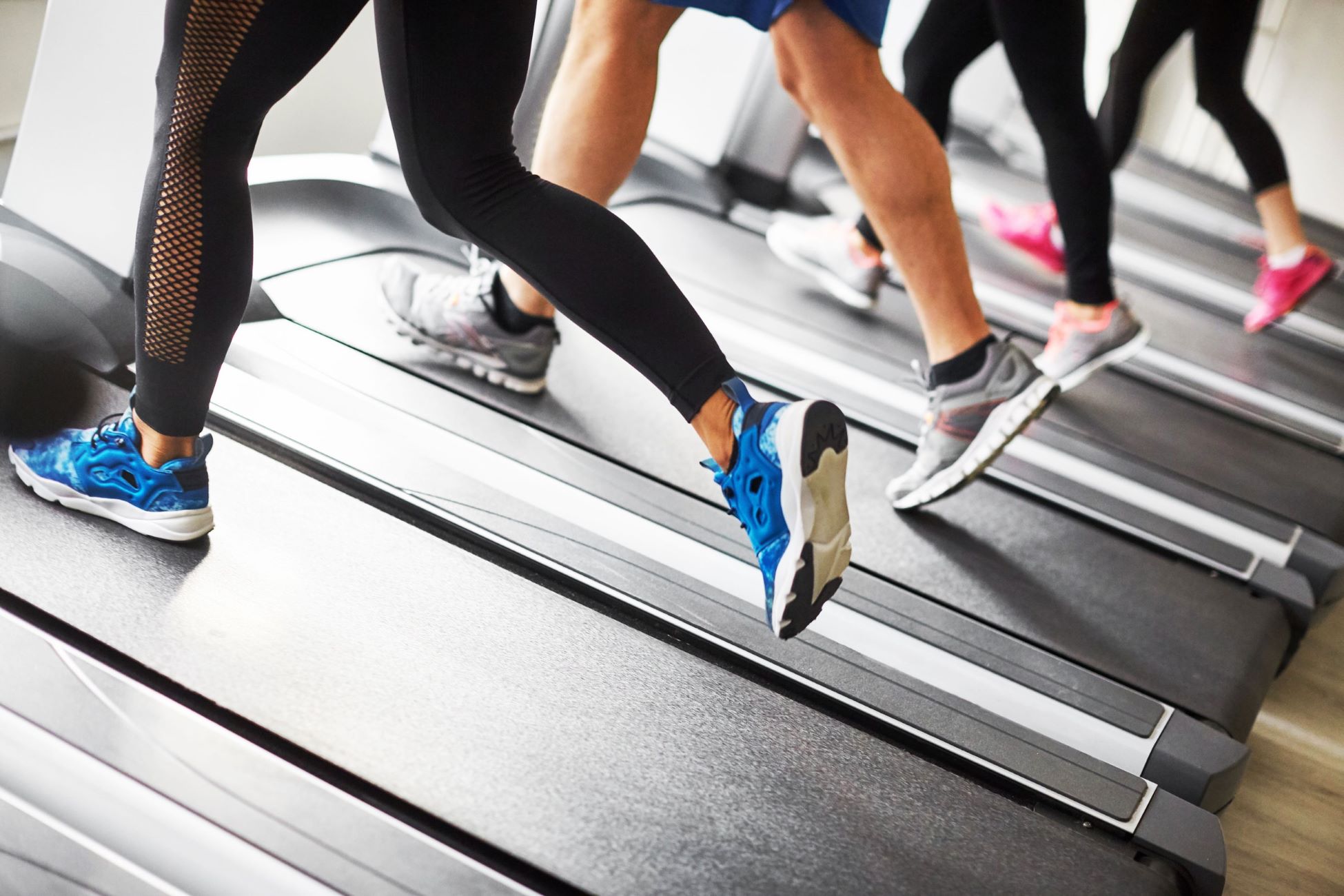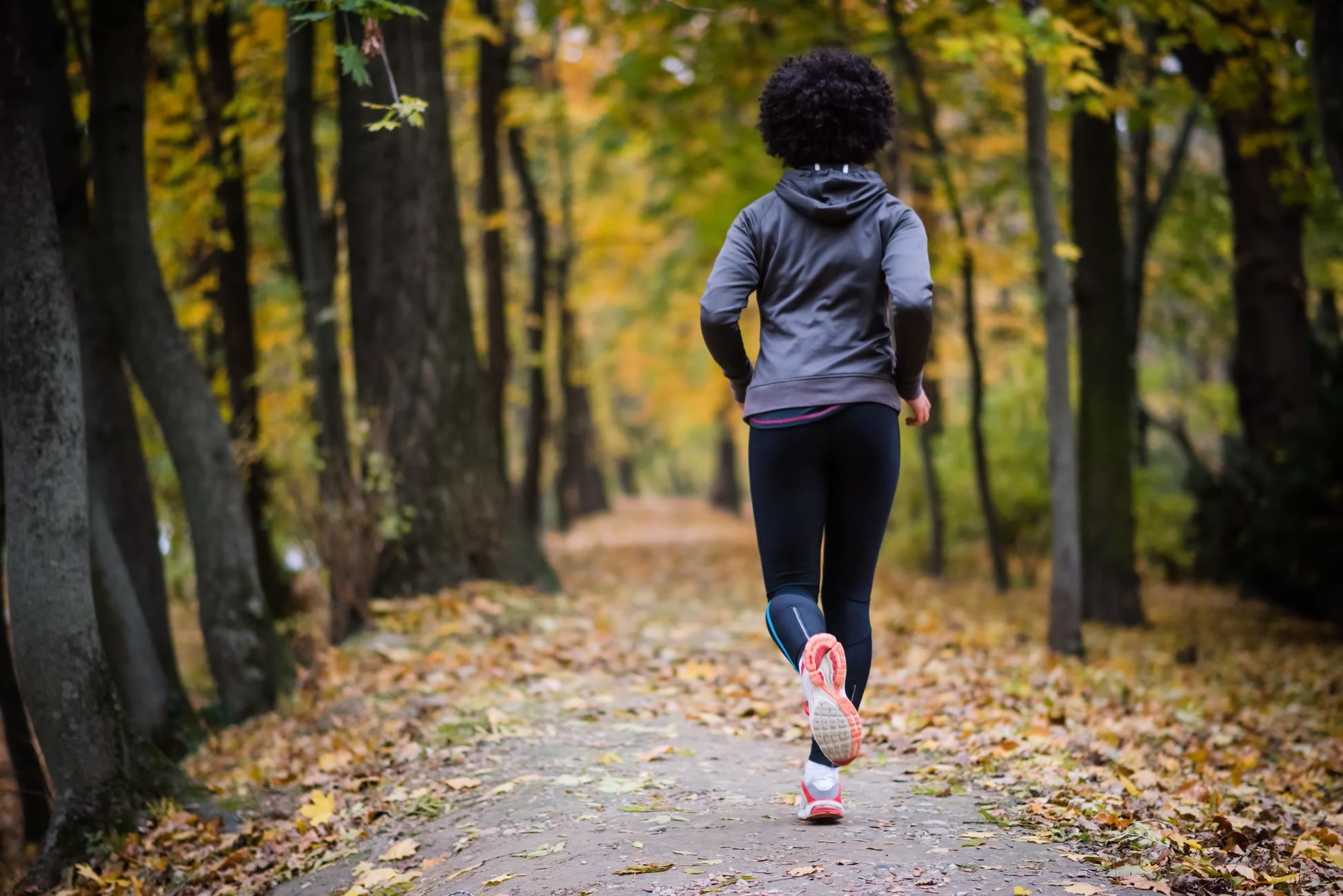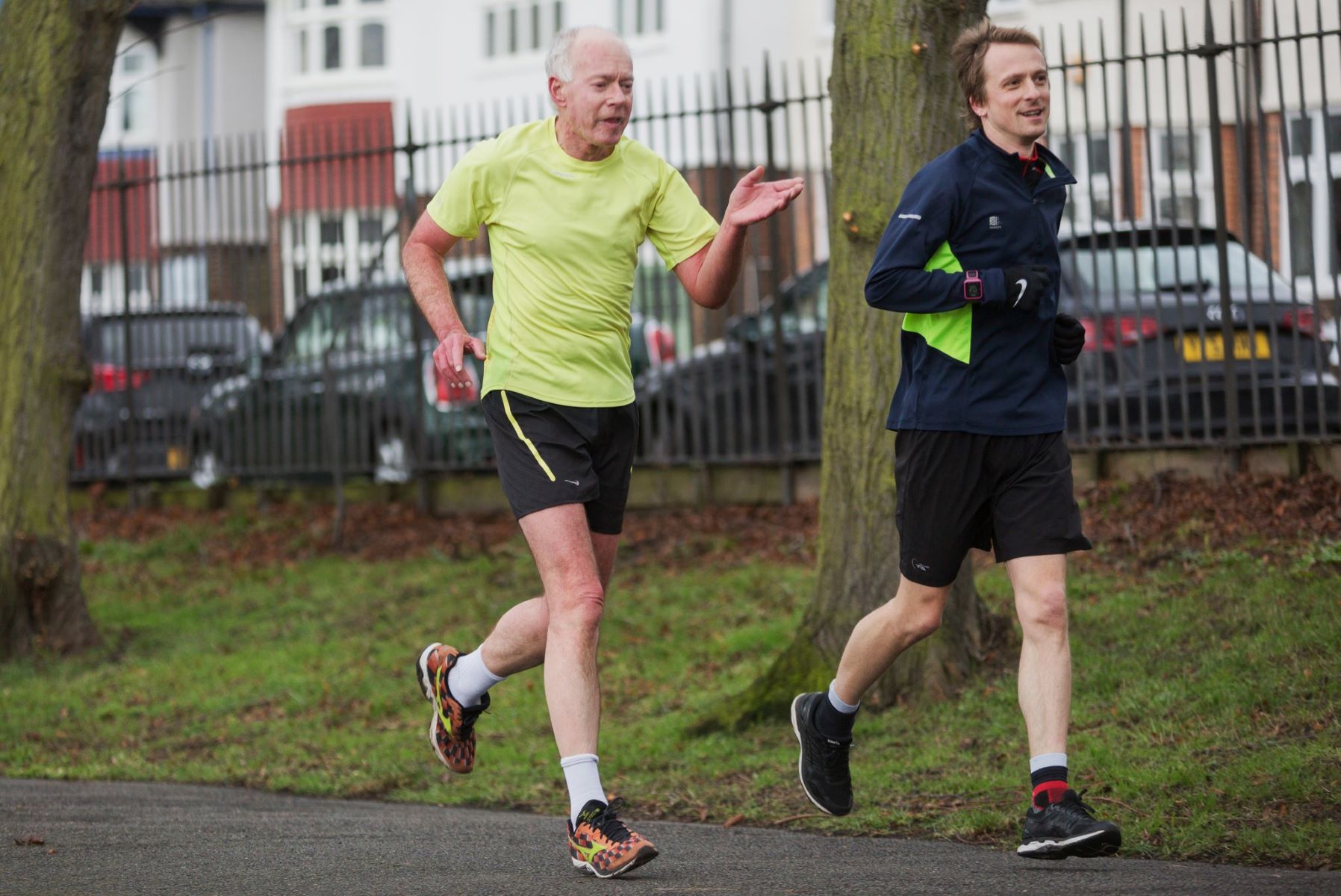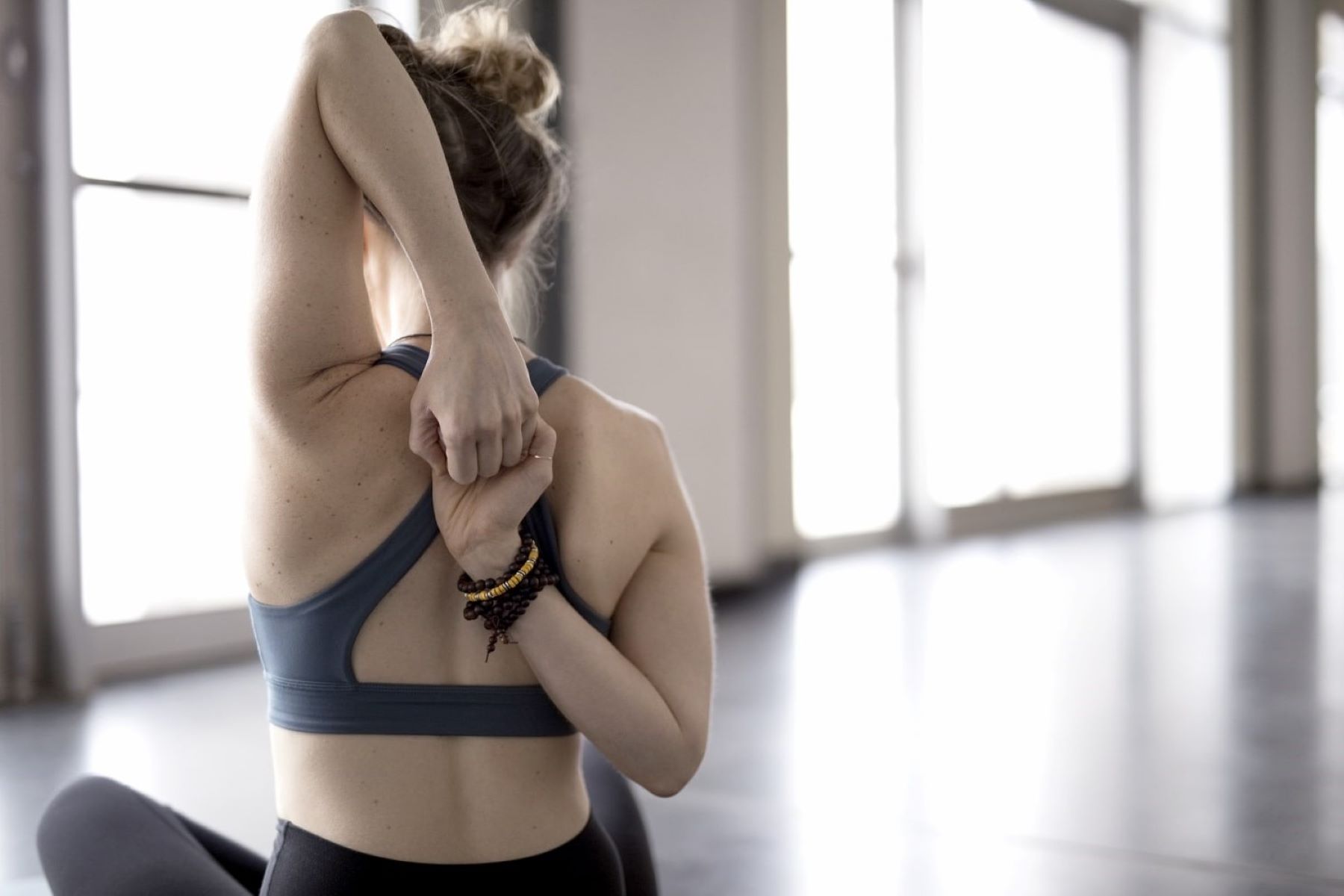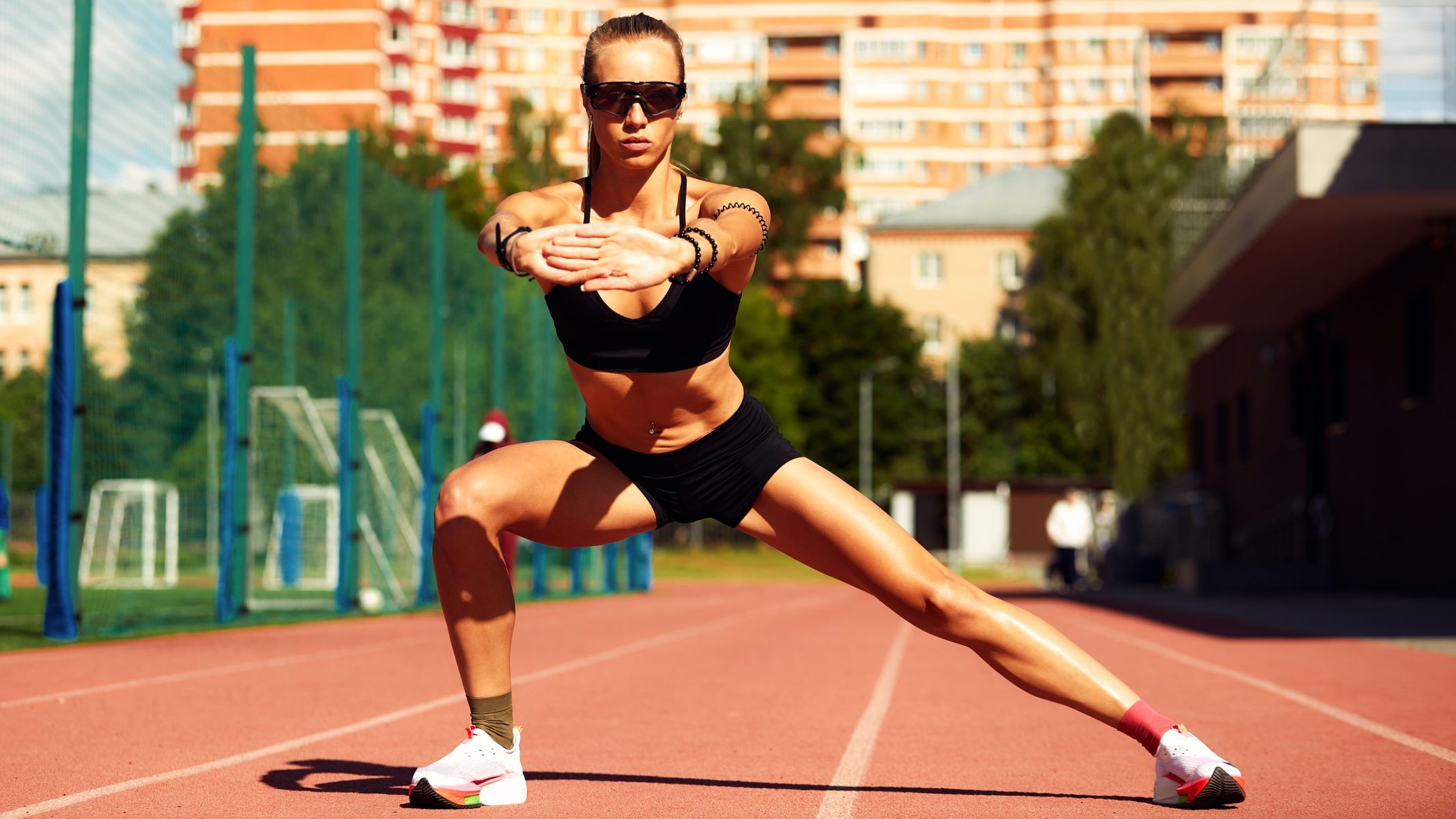Home>Health & Nutrition>Injury Prevention>Seven Flexibility Exercises To Maintain Flexibility For Runners
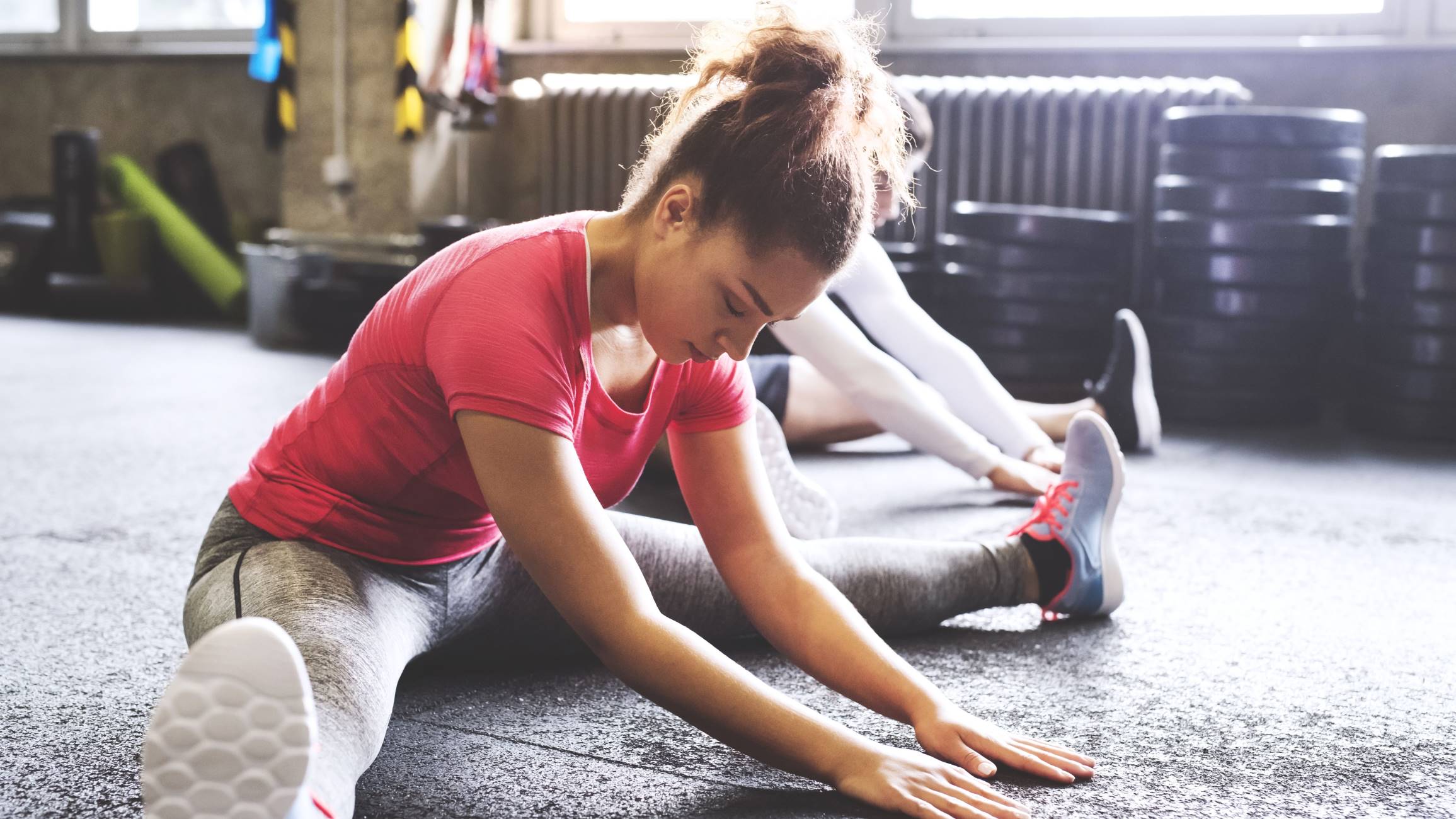

Injury Prevention
Seven Flexibility Exercises To Maintain Flexibility For Runners
Published: February 26, 2024
Maintain flexibility and prevent injuries with these seven essential flexibility exercises designed specifically for runners. Strengthen your muscles and improve your range of motion to stay injury-free.
(Many of the links in this article redirect to a specific reviewed product. Your purchase of these products through affiliate links helps to generate commission for Therunningadvisor.com, at no extra cost. Learn more)
Table of Contents
Importance of Flexibility for Runners
Flexibility plays a pivotal role in the overall performance and well-being of runners. It encompasses the ability of muscles and joints to move through their full range of motion. For runners, flexibility is not just about touching their toes; it directly impacts their running efficiency, injury prevention, and overall comfort during runs.
-
Enhanced Performance: Flexibility allows runners to achieve a more efficient running stride. With improved flexibility, the muscles can move through a wider range of motion, leading to longer and more powerful strides. This can contribute to improved running speed and endurance.
-
Injury Prevention: Maintaining flexibility is crucial for preventing injuries commonly associated with running, such as muscle strains, ligament sprains, and joint pain. When muscles and tendons are flexible, they are better equipped to handle the repetitive stress of running without becoming strained or overworked.
-
Improved Recovery: Flexibility exercises can aid in post-run recovery by reducing muscle soreness and stiffness. Engaging in regular flexibility routines can help alleviate tightness in the muscles, allowing for quicker recovery after intense training sessions or races.
-
Better Posture and Alignment: Flexibility exercises can contribute to improved posture and alignment, which are essential for maintaining proper running form. By enhancing flexibility in key muscle groups, runners can reduce the risk of developing imbalances that may lead to inefficient movement patterns and potential injuries.
-
Enhanced Comfort: Flexible muscles and joints can lead to a more comfortable running experience. Runners with good flexibility are less likely to experience discomfort or tightness during their runs, allowing them to enjoy their workouts to the fullest.
Incorporating flexibility exercises into a runner's training regimen is essential for reaping these benefits. By prioritizing flexibility, runners can optimize their performance, reduce the risk of injuries, and enhance their overall running experience.
Read more: 3 Exercises To Improve Hamstring Flexibility
Dynamic Stretching for Runners
Dynamic stretching is a crucial component of a comprehensive warm-up routine for runners. Unlike static stretching, which involves holding a single position for an extended period, dynamic stretching involves continuous movement through a full range of motion. This type of stretching is particularly beneficial for runners as it helps to prepare the muscles and joints for the specific movements involved in running.
Benefits of Dynamic Stretching
-
Muscle Activation: Dynamic stretching activates and engages the muscles that will be utilized during the run. By incorporating movements such as leg swings, high knees, and walking lunges, runners can effectively prime their muscles for the upcoming activity.
-
Improved Blood Circulation: Dynamic stretching increases blood flow to the muscles, enhancing their flexibility and readiness for physical exertion. This improved circulation helps to deliver essential nutrients and oxygen to the muscles, optimizing their performance during the run.
-
Enhanced Range of Motion: Dynamic stretching promotes a wider range of motion in the muscles and joints, which is particularly advantageous for runners. By performing dynamic movements that mimic the actions of running, individuals can prepare their bodies for the specific demands of the activity.
Dynamic Stretching Exercises for Runners
-
Leg Swings: Stand upright and swing one leg forward and backward in a controlled manner, gradually increasing the range of motion. This exercise targets the hamstrings and hip flexors, essential muscle groups for running.
-
High Knees: While standing in place, lift each knee as high as possible, alternating between legs. This movement helps to activate the hip flexors and quadriceps while promoting dynamic flexibility in the lower body.
-
Walking Lunges: Perform walking lunges, taking long strides and ensuring that the front knee does not extend beyond the toes. This exercise engages the quadriceps, hamstrings, and glutes while promoting dynamic hip flexibility.
-
Ankle Bounces: Stand on one foot and gently bounce on the ankle, allowing the calf muscles to dynamically stretch and prepare for the impact of running.
Incorporating Dynamic Stretching into the Warm-Up
Prior to a run, it is advisable to allocate 5-10 minutes to perform dynamic stretching exercises. This dedicated time allows runners to gradually increase their heart rate, elevate their body temperature, and prepare their muscles and joints for the upcoming physical activity. By integrating dynamic stretching into their warm-up routine, runners can enhance their overall performance, reduce the risk of injury, and optimize their running experience.
Dynamic stretching serves as a valuable tool for runners, promoting muscle activation, improved circulation, and enhanced range of motion. By incorporating dynamic stretching exercises into their warm-up routine, runners can effectively prepare their bodies for the demands of running, ultimately contributing to a more efficient and enjoyable running experience.
Static Stretching for Runners
Static stretching is a fundamental component of a runner's overall flexibility regimen. Unlike dynamic stretching, which involves continuous movement, static stretching focuses on holding a specific position to elongate and relax the targeted muscles. This type of stretching is particularly beneficial for runners as it helps to improve flexibility, reduce muscle tension, and enhance overall muscle relaxation.
Benefits of Static Stretching
-
Improved Flexibility: Engaging in regular static stretching exercises can lead to improved flexibility in key muscle groups, such as the hamstrings, quadriceps, and calves. Enhanced flexibility allows runners to achieve a greater range of motion, which can contribute to improved running efficiency and reduced risk of injury.
-
Muscle Relaxation: Static stretching promotes muscle relaxation by releasing tension and reducing stiffness in the muscles. This can be especially beneficial for runners who may experience tightness in the lower body after intense training sessions or long runs.
-
Injury Prevention: By incorporating static stretching into their routine, runners can help prevent muscle imbalances and reduce the risk of strains and sprains. Flexible muscles and tendons are better equipped to handle the demands of running, decreasing the likelihood of overuse injuries.
Static Stretching Exercises for Runners
-
Hamstring Stretch: While seated or standing, extend one leg in front of you and gently lean forward, reaching towards the toes. Hold the stretch for 20-30 seconds, feeling the elongation in the back of the thigh.
-
Quadriceps Stretch: Standing upright, bend one knee and bring the foot towards the glutes, gently grasping the ankle or foot with the corresponding hand. Hold the stretch for 20-30 seconds, feeling the stretch in the front of the thigh.
-
Calf Stretch: Stand facing a wall with one foot behind the other. Lean forward, keeping the back heel on the ground, and hold the stretch for 20-30 seconds, feeling the stretch in the calf muscle.
-
Hip Flexor Stretch: Kneel on one knee with the other foot in front, ensuring the front knee is at a 90-degree angle. Gently lean forward, feeling the stretch in the front of the hip and thigh. Hold for 20-30 seconds and then switch sides.
Incorporating Static Stretching into the Routine
Runners should incorporate static stretching into their post-run cool-down routine. This allows the muscles to relax and elongate after the physical exertion of running, promoting improved flexibility and aiding in the prevention of muscle tightness and soreness. By dedicating time to static stretching after a run, runners can support their overall flexibility and recovery, ultimately contributing to enhanced performance and reduced risk of injury.
Static stretching serves as a valuable tool for runners, promoting improved flexibility, muscle relaxation, and injury prevention. By integrating static stretching exercises into their routine, runners can optimize their flexibility, reduce muscle tension, and support their overall running experience.
Read more: Gear Review: Kinomap Trainer
Yoga Poses for Runners
Yoga offers a myriad of benefits for runners, encompassing physical, mental, and emotional well-being. The practice of yoga not only enhances flexibility but also cultivates strength, balance, and mindfulness, making it an ideal complement to a runner's training regimen. Incorporating specific yoga poses into a runner's routine can help address the unique demands placed on the body during running, promoting overall performance and injury prevention.
Benefits of Yoga for Runners
Yoga serves as a holistic practice that addresses various aspects essential for runners:
-
Flexibility: Yoga poses focus on elongating and stretching the muscles, targeting areas such as the hamstrings, hips, and lower back. Improved flexibility can lead to a more efficient running stride and reduced risk of muscle tightness and imbalances.
-
Strength: Many yoga poses engage and strengthen the core, glutes, and stabilizing muscles, which are crucial for maintaining proper running form and preventing injuries.
-
Balance and Stability: Yoga poses challenge balance and proprioception, helping runners develop stability and coordination, which are vital for navigating uneven terrain and preventing falls.
-
Mindfulness and Relaxation: The meditative aspect of yoga promotes mental clarity, stress reduction, and enhanced mind-body awareness, which can contribute to improved focus and resilience during runs.
Key Yoga Poses for Runners
-
Downward-Facing Dog (Adho Mukha Svanasana): This pose stretches the calves, hamstrings, and shoulders while also engaging the core and promoting overall body awareness.
-
Low Lunge (Anjaneyasana): The low lunge opens the hip flexors and quadriceps, addressing tightness often experienced by runners, and also encourages stability and balance.
-
Pigeon Pose (Eka Pada Rajakapotasana): Pigeon pose targets the hip flexors, glutes, and piriformis, offering deep stretching and release in the hips and lower back.
-
Warrior II (Virabhadrasana II): This pose strengthens the legs, opens the hips, and enhances overall lower body endurance and stability.
-
Tree Pose (Vrksasana): Tree pose challenges balance and strengthens the stabilizing muscles of the legs and core, promoting greater stability during running.
Integration into the Runner's Routine
Runners can incorporate yoga poses into their training routine by dedicating specific sessions to yoga practice or integrating individual poses into their post-run stretching and recovery routine. By doing so, runners can reap the benefits of improved flexibility, strength, balance, and mental focus, ultimately enhancing their overall running experience.
By integrating yoga into their training regimen, runners can cultivate a balanced and resilient body, reduce the risk of injuries, and optimize their running performance. The integration of yoga poses offers a holistic approach to supporting the physical and mental well-being of runners, contributing to their long-term success and enjoyment of the sport.
Pilates Exercises for Runners
Pilates, renowned for its focus on core strength, stability, and flexibility, offers a multitude of benefits for runners. The integration of Pilates exercises into a runner's training regimen can significantly enhance overall performance, reduce the risk of injuries, and promote balanced muscle development. By targeting key muscle groups and emphasizing proper alignment and control, Pilates serves as a valuable complement to running, addressing the specific physical demands and imbalances associated with the sport.
Benefits of Pilates for Runners
Core Strength and Stability
Pilates exercises place a strong emphasis on engaging the deep core muscles, including the transverse abdominis and pelvic floor muscles. These muscles play a crucial role in providing stability and support to the spine and pelvis, essential for maintaining proper running form and minimizing the risk of overuse injuries.
Muscle Balance and Alignment
Through targeted movements and exercises, Pilates helps runners address muscle imbalances and asymmetries that may arise from the repetitive nature of running. By promoting balanced muscle development and improved alignment, Pilates can aid in preventing overuse injuries and enhancing overall body mechanics during running.
Flexibility and Range of Motion
Many Pilates exercises involve dynamic stretching and controlled movements, which can contribute to improved flexibility in key muscle groups such as the hamstrings, hip flexors, and glutes. Enhanced flexibility can lead to a more efficient running stride and reduced risk of muscle tightness and discomfort.
Mind-Body Connection
Pilates encourages heightened body awareness, breath control, and mental focus, all of which are beneficial for runners. By fostering a strong mind-body connection, Pilates can help runners maintain proper form, regulate breathing, and stay mentally engaged during their runs.
Key Pilates Exercises for Runners
The Hundred
This classic Pilates exercise targets core strength and endurance, requiring controlled breathing and engagement of the abdominal muscles. The Hundred is beneficial for developing core stability and enhancing overall endurance, both of which are essential for runners.
Single Leg Circles
By performing controlled circles with one leg while maintaining stability through the core, runners can improve hip mobility and stability. This exercise helps address imbalances and promotes balanced strength in the hip muscles, crucial for running mechanics.
The Roll-Up
The Roll-Up exercise focuses on spinal articulation and core strength, promoting flexibility in the spine and enhancing overall core control. This exercise can contribute to improved posture and alignment, essential for maintaining proper running form.
Leg Springs Series
The Leg Springs Series in Pilates targets the lower body, including the hips, glutes, and thighs. These exercises promote lower body strength, stability, and flexibility, addressing key muscle groups utilized during running.
Integration into the Runner's Routine
Runners can incorporate Pilates exercises into their training routine by dedicating specific sessions to Pilates practice or integrating individual exercises into their cross-training and recovery routine. By incorporating Pilates into their regimen, runners can benefit from improved core strength, muscle balance, flexibility, and mental focus, ultimately enhancing their overall running experience.
By integrating Pilates exercises into their training regimen, runners can cultivate a balanced and resilient body, reduce the risk of injuries, and optimize their running performance. The integration of Pilates offers a holistic approach to supporting the physical and mental well-being of runners, contributing to their long-term success and enjoyment of the sport.
Foam Rolling for Runners
Foam rolling, also known as self-myofascial release, has gained widespread recognition as a valuable tool for runners seeking to enhance their flexibility, mobility, and recovery. This practice involves using a cylindrical foam roller to apply pressure to specific areas of the body, targeting the fascia, muscles, and connective tissues. For runners, integrating foam rolling into their training regimen can offer a multitude of benefits, ranging from improved muscle flexibility and reduced muscle soreness to enhanced overall performance and injury prevention.
Benefits of Foam Rolling
Muscle Recovery and Soreness Reduction
After intense training sessions or long runs, runners often experience muscle soreness and tightness. Foam rolling serves as an effective method for alleviating muscle tension and promoting faster recovery. By applying targeted pressure to the muscles, runners can stimulate blood flow and release adhesions, ultimately reducing post-exercise soreness and discomfort.
Improved Flexibility and Range of Motion
Regular foam rolling can contribute to improved muscle flexibility and joint mobility, essential for runners aiming to achieve a more efficient running stride. By targeting specific muscle groups prone to tightness, such as the quadriceps, hamstrings, and calves, runners can enhance their overall range of motion, potentially leading to improved running performance and reduced risk of injury.
Injury Prevention and Muscle Maintenance
Foam rolling plays a crucial role in maintaining healthy muscle tissue and preventing overuse injuries. By addressing muscle imbalances and releasing tension in the muscles, runners can minimize the risk of developing chronic issues related to tightness and restricted mobility. Additionally, foam rolling can aid in identifying areas of muscular tightness or discomfort, allowing runners to address potential issues before they escalate into more significant problems.
Key Foam Rolling Techniques for Runners
Quadriceps Roll
By positioning the foam roller beneath the thighs and using the arms to support the body, runners can roll back and forth along the length of the quadriceps. This technique targets the front thigh muscles, addressing tightness commonly experienced by runners.
Hamstring Roll
To target the hamstrings, runners can sit on the foam roller with the hands placed behind for support and roll along the back of the thighs. This technique helps release tension in the hamstrings, promoting improved flexibility and reduced muscle tightness.
Calf Roll
By placing the foam roller beneath the calves and using the arms to lift the body, runners can roll along the back of the lower legs. This technique addresses tightness in the calf muscles, which can impact running efficiency and contribute to discomfort during runs.
Integration into the Runner's Routine
Runners can incorporate foam rolling into their training routine by dedicating specific sessions to foam rolling practice or integrating it into their post-run recovery routine. By incorporating foam rolling into their regimen, runners can benefit from improved muscle recovery, flexibility, and injury prevention, ultimately enhancing their overall running experience.
Incorporating foam rolling into their training regimen can empower runners to take proactive measures in maintaining healthy muscles, reducing the risk of injuries, and optimizing their running performance. The integration of foam rolling offers a practical and accessible approach to supporting the physical well-being of runners, contributing to their long-term success and enjoyment of the sport.
Resistance Band Exercises for Runners
Resistance band exercises offer runners a versatile and effective way to enhance their strength, stability, and overall performance. These simple yet impactful exercises can target key muscle groups involved in running, providing runners with the opportunity to build strength, improve muscle balance, and reduce the risk of injuries. By incorporating resistance band exercises into their training regimen, runners can benefit from a comprehensive approach to physical conditioning that complements their running routine.
Benefits of Resistance Band Exercises
Targeted Muscle Engagement
Resistance band exercises allow runners to specifically target muscles essential for running, such as the glutes, quadriceps, hamstrings, and hip abductors. By engaging these muscle groups through resistance band movements, runners can enhance their overall strength and stability, contributing to improved running mechanics and reduced risk of overuse injuries.
Functional Strength Development
The use of resistance bands promotes functional strength development, which is crucial for runners. These exercises mimic the natural movements and demands of running, helping to build strength that directly translates to improved performance on the road or trail. By strengthening the muscles in a functional manner, runners can optimize their running efficiency and endurance.
Injury Prevention and Rehabilitation
Resistance band exercises can aid in injury prevention and rehabilitation by addressing muscle imbalances and weaknesses. By incorporating targeted resistance band movements, runners can proactively strengthen vulnerable areas, reduce the risk of overuse injuries, and support the rehabilitation of existing muscular imbalances.
Key Resistance Band Exercises for Runners
Clamshells
This exercise targets the hip abductors and external rotators, crucial for maintaining hip stability and preventing IT band issues. By placing a resistance band around the thighs and performing controlled clamshell movements, runners can strengthen these key muscles, promoting improved hip stability during running.
Lateral Band Walks
Lateral band walks engage the glutes, hip abductors, and quadriceps, promoting strength and stability in the lower body. By performing side-to-side movements while maintaining tension on the resistance band, runners can enhance their lateral strength and support proper knee alignment, reducing the risk of common running-related injuries.
Standing Leg Abduction
This exercise targets the hip abductors and gluteus medius, which play a crucial role in maintaining pelvic stability and proper running mechanics. By attaching a resistance band to a stable anchor and performing leg abduction movements, runners can strengthen these muscles, contributing to improved overall stability and balance.
Resistance Band Squats
Resistance band squats engage the quadriceps, hamstrings, and glutes, promoting lower body strength and power. By incorporating resistance bands into traditional squat movements, runners can enhance their lower body strength, ultimately supporting their running performance and reducing the risk of muscle imbalances.
Integration into the Runner's Routine
Runners can integrate resistance band exercises into their training routine by incorporating them into their strength training sessions or cross-training activities. By dedicating specific sessions to resistance band exercises or incorporating them into their warm-up and cool-down routines, runners can benefit from improved muscle strength, stability, and injury prevention, ultimately enhancing their overall running experience.
Incorporating resistance band exercises into their training regimen empowers runners to address specific muscle weaknesses, build functional strength, and reduce the risk of injuries. The integration of resistance band exercises offers a practical and targeted approach to supporting the physical well-being of runners, contributing to their long-term success and enjoyment of the sport.

